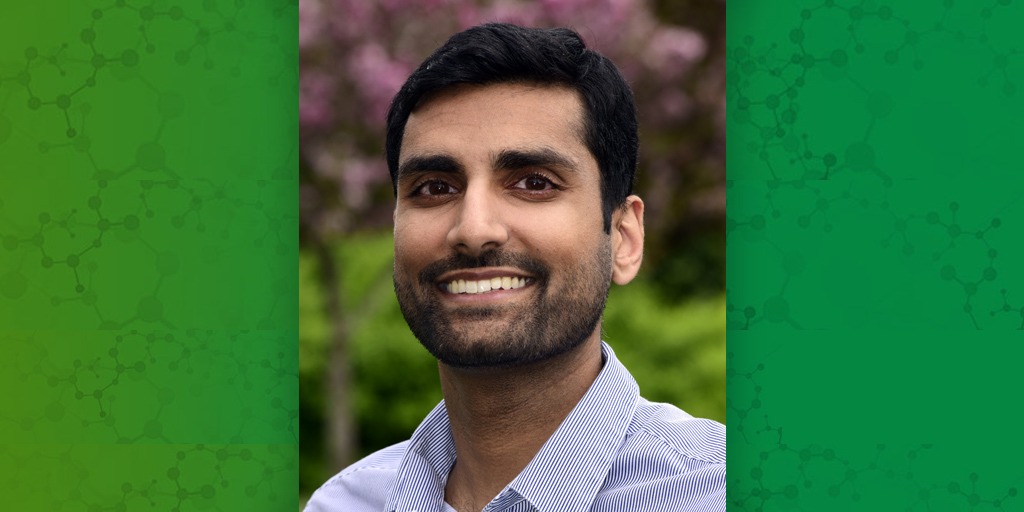The substitution of hazardous chemicals with equally hazardous ones and the daunting accumulation of toxicological data were among the challenges covered at the Aug. 4 meeting of the National Toxicology Program Board of Scientific Counselors(https://ntp.niehs.nih.gov/events/bsc/#20210804), held virtually.
Scientists from the NIEHS Division of the National Toxicology Program (DNTP) presented two initiatives aimed at addressing fundamental issues in public health and toxicology.
One is the Safe and Sustainable Alternatives (SSA) Program, and the other is the Scientific Cyberinfrastructure (SCI) Program.
Alternative chemicals, limited safety data
Alternative chemicals and products often are portrayed as better and safer than those they replace, yet there often is limited or no data regarding their safety in humans.
Researchers sometimes find that the new substances are as toxic as the previous ones, said Suril Mehta, Dr.P.H., an epidemiologist in the Integrative Health Assessments Branch.
For example, lead arsenate was widely used as an insecticide until scientists found it was unsafe. It was replaced by the structurally dissimilar chemical dichlorodiphenyltrichloroethane, commonly known as DDT.
However, that substance also was deemed hazardous and replaced by organophosphate pesticides, which have been associated with acute and chronic health effects.
Breaking the cycle
“Our program team has identified a clear and present need to disrupt this historical cycle of regrettable substitutions,” said Mehta.
 Ferguson said the SSA Program aims to comparatively evaluate chemical alternatives and characterize their potential toxicity in humans. (Photo courtesy of Steve McCaw / NIEHS)
Ferguson said the SSA Program aims to comparatively evaluate chemical alternatives and characterize their potential toxicity in humans. (Photo courtesy of Steve McCaw / NIEHS)The SSA Program proposes to break this cycle through more efficient testing, expanded efforts to improve toxicology tools and strategies, and increased engagement and collaboration with community stakeholders.
Stephen Ferguson, Ph.D., a chemist in the Predictive Toxicology Branch, said the science underlying more proactive approaches to alternative chemicals is rapidly evolving.
“We plan to employ many of those different approaches using in vitro, in vivo, and in silico tools that are integrated together into a more powerful context of interpretation for human health,” Ferguson noted.
From data to knowledge
The National Toxicology Program generates enormous amounts of data on how various biological systems — such as cells, tissues, and animal models — respond when exposed to chemicals of unknown toxicity.
However, resources for handling all of this data are spread across many entities, said Jennifer Fostel, Ph.D., from the DNTP Office of Program Operations.
Those entities range from traditional information technology offices to scientific contractors that provide informatics, data science, and scientific computing capabilities.
The SCI Program aims to coordinate these fragmented efforts and resources, building up the infrastructure that is needed to effectively transform research data into knowledge that benefits public health.
 Fostel said one SCI goal is to supply strategic capabilities that support predictive toxicology tools and data, and to help apply these resources to improve health. (Photo courtesy of Steve McCaw / NIEHS)
Fostel said one SCI goal is to supply strategic capabilities that support predictive toxicology tools and data, and to help apply these resources to improve health. (Photo courtesy of Steve McCaw / NIEHS)A tremendous opportunity
Fostel believes that the SCI Program could provide a tremendous opportunity for training and give researchers a deeper appreciation of scientific cyberinfrastructure.
“If you have some understanding of data science, it will enhance your work,” she said.
“Your research will be more usable and more shareable, other people will use your work and collaborate with you, and you will get more citations and more grants.”
(Marla Broadfoot, Ph.D., is a contract writer for the NIEHS Office of Communications and Public Liaison.)
Source link
factor.niehs.nih.gov

